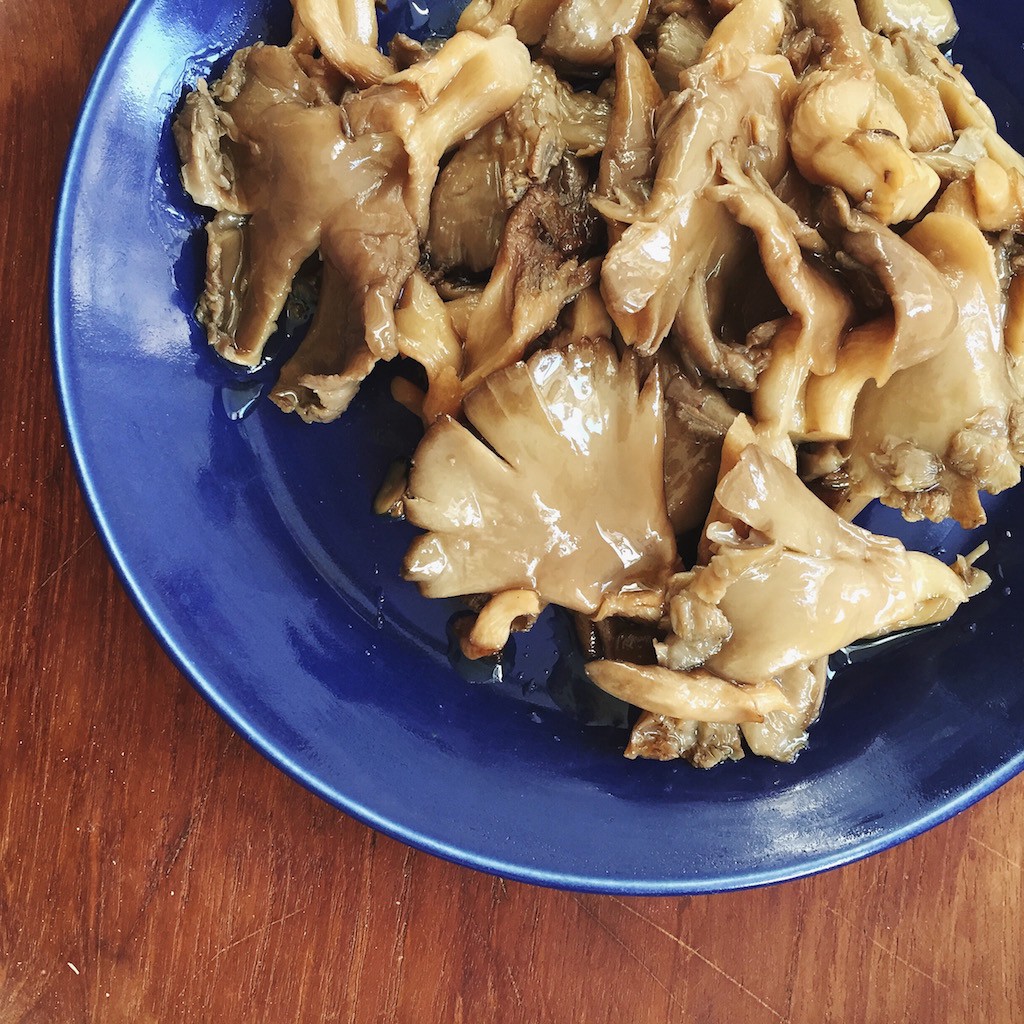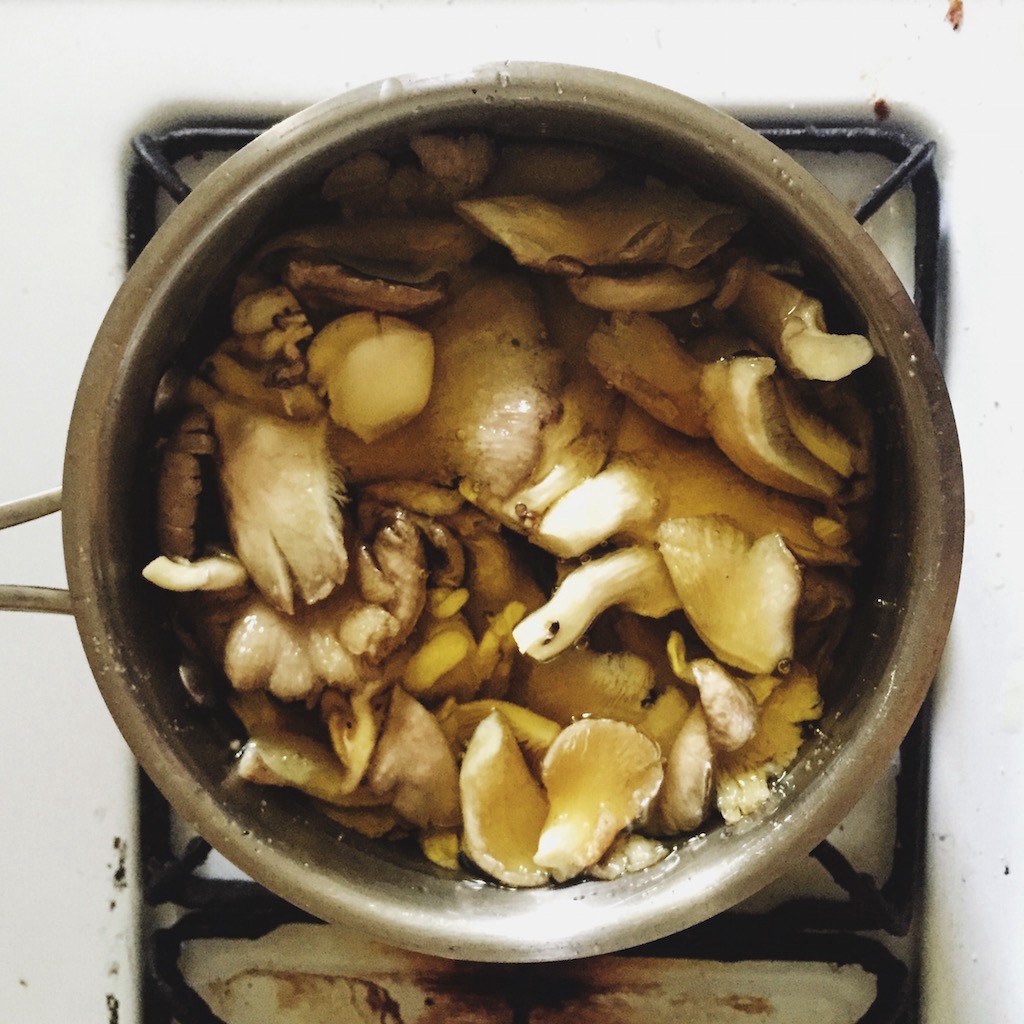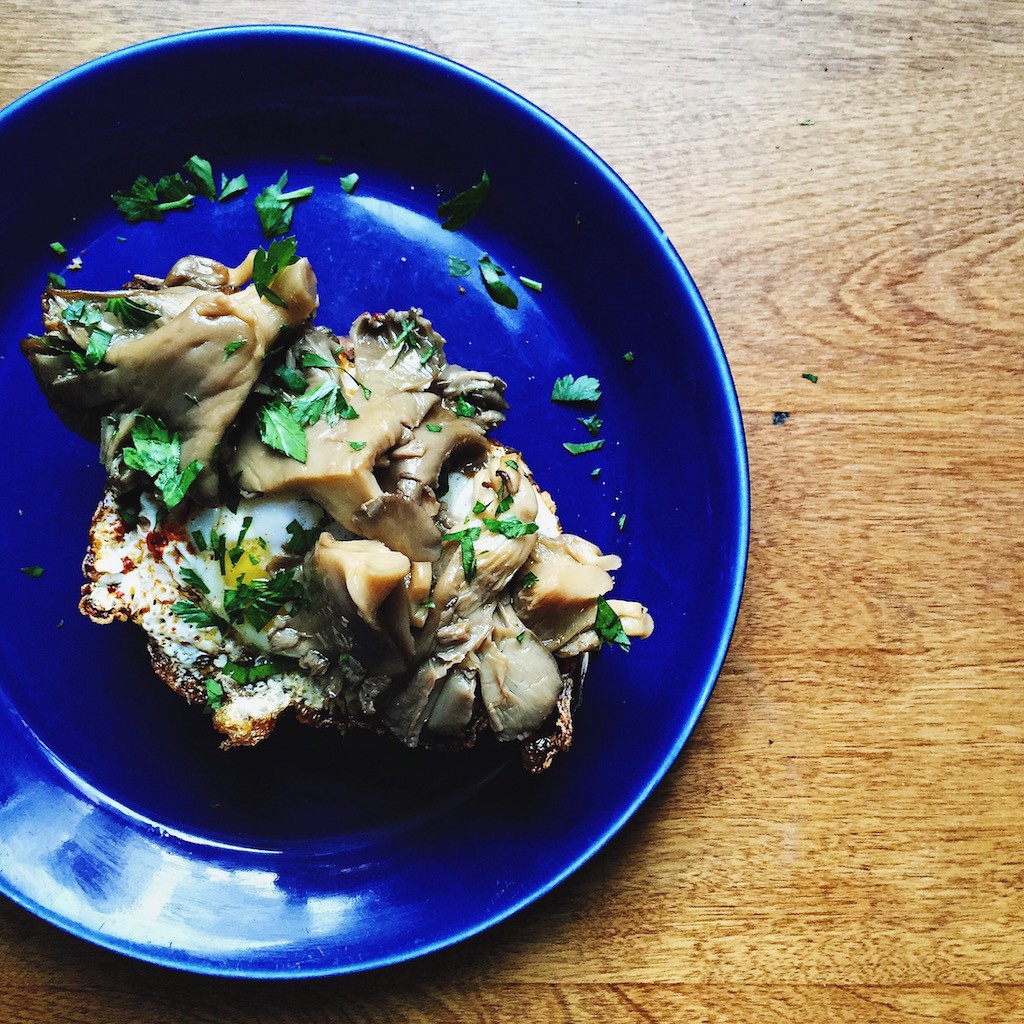You're Cooking Your Mushrooms All Wrong
by Marian Bull

For something so elementary, mushrooms are shockingly easy to fuck up. It is, usually, an issue of water content: you’re battling liquid leaching from a fungus while trying to cook it in oil, trying to sear or crisp or darken its outsides while its insides gush. (Remember this: crowding leads to steaming!) They rarely taste bad, of course, if you employ enough salt and fat, but you’ve had really good mushrooms before; you know these are not them. You know there’s something you’re missing. You want soft and lush and earthy and you’re only maybe seventy percent of the way there.
Enter: oil poaching. It’s a technique most commonly used to cook fish, whose delicateness benefits from gentle, low-temperature cooking. Duck confit is another classic example, albeit with a different form of fat. But oil poaching may be the easiest way to successfully make your mushrooms great, whether they’re the wallet-emptying farmers market sort or brown buttons from the bodega.
Oil poaching is often employed in Spain’s Basque country, among other places. In her new cookbook, The Basque Book, out this month from TenSpeed press, chef Alexandra Raij includes a recipe for setas confitadas — essentially confited mushrooms, poached slowly in oil until all their squeaky chew is gone.
In the recipe’s headnote, Raij explains that the Basques use this as a way to preserve wild mushrooms, whose season is short but hotly anticipated. The Basques always have large stores of oil on hand, the way cooks in the American south keep bacon fat in a recycled can next to the stove. They use and reuse their olive oil, to poach mushrooms and then potatoes, maybe, for tortilla española. They treat it with reverence but they’re never stingy. Perhaps the most important advice you’ll find in The Basque Book is this: “I strongly recommend buying oil in the largest container that makes sense for your family. You won’t be treating it as a precious thing to be used sparingly, and you’ll end up paying less if you buy it in larger quantities. Use it and then reuse it.” Oh, also: buy the good stuff.
While the mushrooms cook, the oil bubbles gently as though it were simmering; really, those are pockets of water vapor escaping. (Oil doesn’t really boil — not before it smokes, at least.) When the mushrooms are done, they have a sweet, pure mushroom flavor, without the interference of caramelization or herbs. The texture is velvety and juicy, rich but not greasy. The most luxurious fungus you ever did see.

This lushness can be attributed to both the spongy texture of mushrooms — which leads to some oil absorption in the cooking process, something that doesn’t happen so much with a piece of fish — and the scientific differences between oil and water. Many cooks favor oil poaching over poaching in water or stock because it makes for gentler cooking, and a more tender result. J. Kenji López-Alt, author of The Food Lab Cookbook, explains it this way: “Water has a specific heat of around 2.25 times that of oil, and is also about 25% more dense, which means that a cup of water at a given temperature (say, 140°F) will have nearly three times more energy in it than a cup of oil at the same temperature.” Less energy means gentler cooking and more tender results. But López-Alt also points out that much of oil poaching’s perceived effect comes from external texture. The piece of fish or chunk of mushroom coated in oil tastes juicier and richer because of an outer coating of oil — ”so they actually taste moister than foods cooked in water.”
Depending on how you look at it, treating mushrooms this way is either brilliant (more fat, yay!) or dangerous (more fat, boo!). But the effect — buttery as all heck, so tender it feels young — is pretty unrivaled. And at the bottom of the pot, you’re left with ultra-concentrated mushroom liquid, far sweeter and richer than any stock you could simmer. It’s a scant but luscious potlikker, the sort of thing a host will want to save for herself.
“For me, I have this whole thing about lessons [I’ve learned] from pil pil,” Raij recently explained over the phone. Pil pil is a cornerstone of Basque cooking, and reductive in its simplicity: poach cod in garlic-infused olive oil, and the gelatin from its bones seeps into the oil, turning the latter into a silky sauce. It’s served just like that: rich sauce over a piece of fish, monochromatic and smooth. The dish “totally radicalizes the way you think about food forever,” says Raij. “It’s like you’re recovering everything — kind of like a pan sauce, but way more complex and more elegant.”
Poaching mushrooms in oil — and ending up with mushroom-infused oil in turn — is the sort of thing that can incite a giddiness in home cook. The slippery little results are perfect on garlic-rubbed toast, as Raij suggests in the book, or chopped and tossed with pasta, or laced into a grain salad. They get particularly friendly with an olive oil-fried egg; bonus points if you use your shroom oil for frying.

From here, the possibilities of expansion are a sort of choose-your-own-adventure game. What else could you poach? Egg yolks, apparently, in a rustic version of spherification. Tomatoes, too, which Raij claims turn into a ball of tomato sauce held together by skin. Fish, sure; potatoes, of course. Your byproducts are even more exciting: take that mushroom-infused oil and make it stronger by poaching more mushrooms. Fry an egg in it. Whisk it into mushroom aioli. That cooking liquid left at the bottom of the pot — you can add some vinegar, whisk in some excess oil, and you get a vinaigrette. Resourceful recipes are all well and good; recipes that turn you into a resourceful cook are gold.
